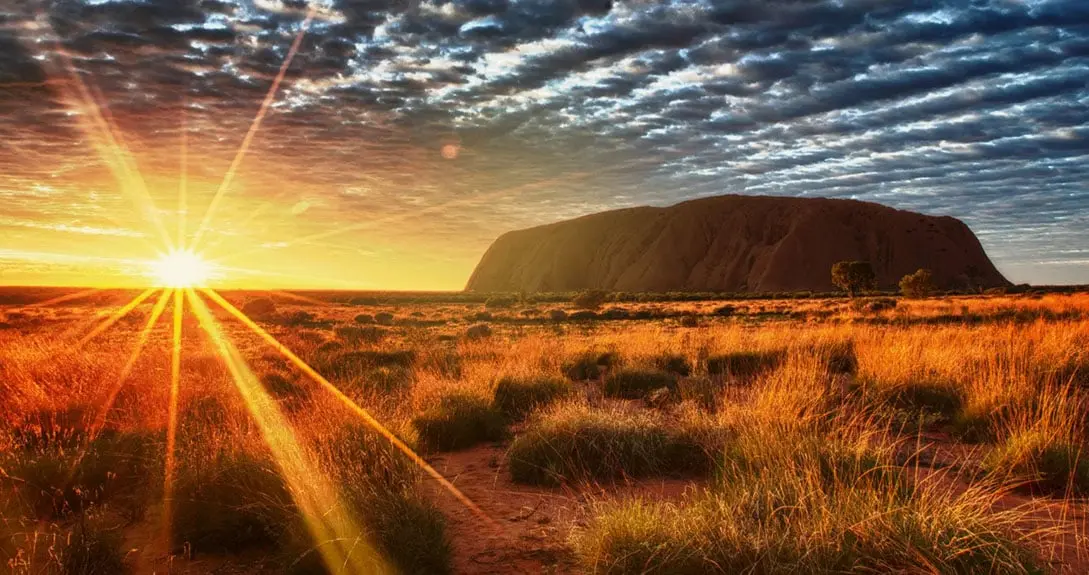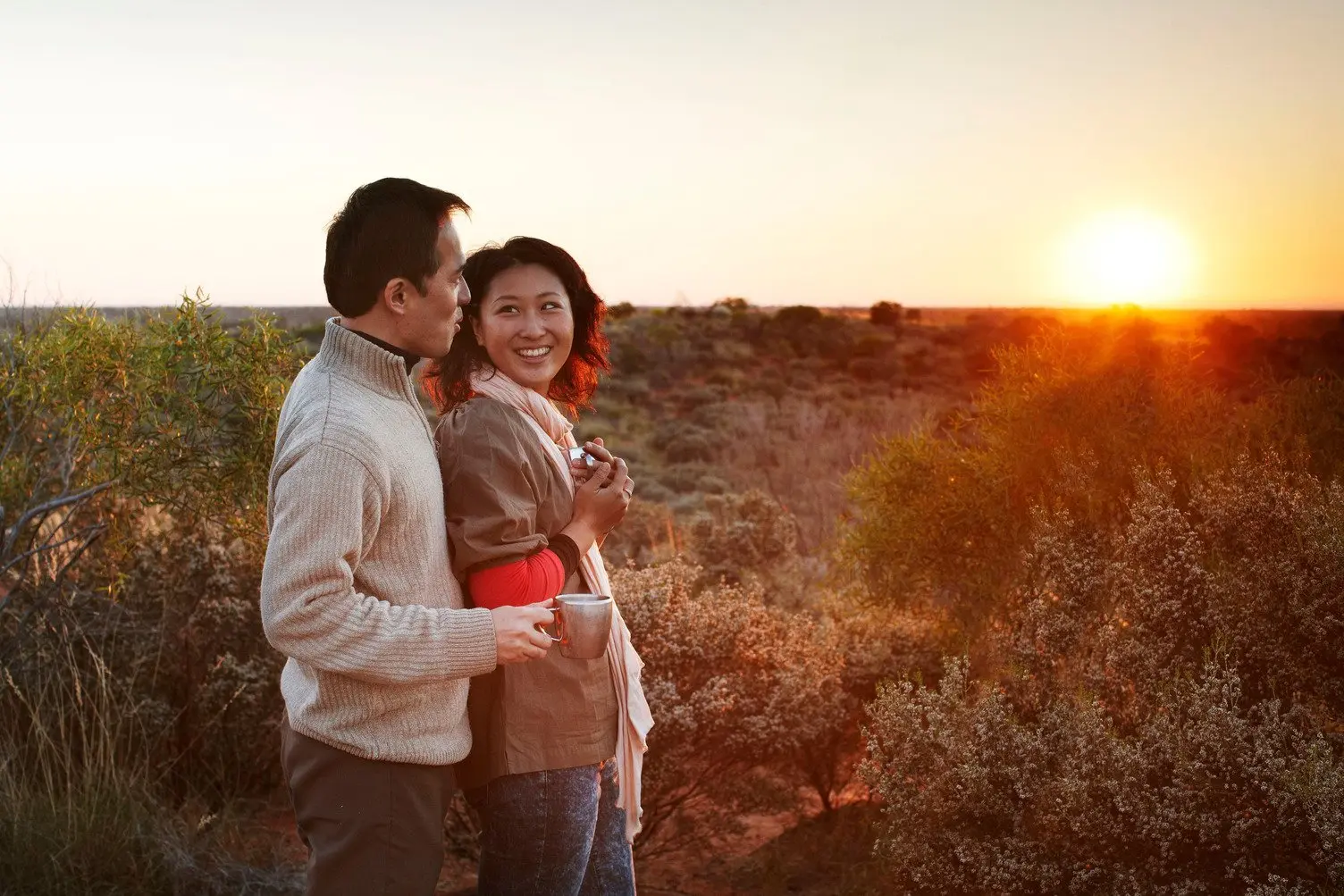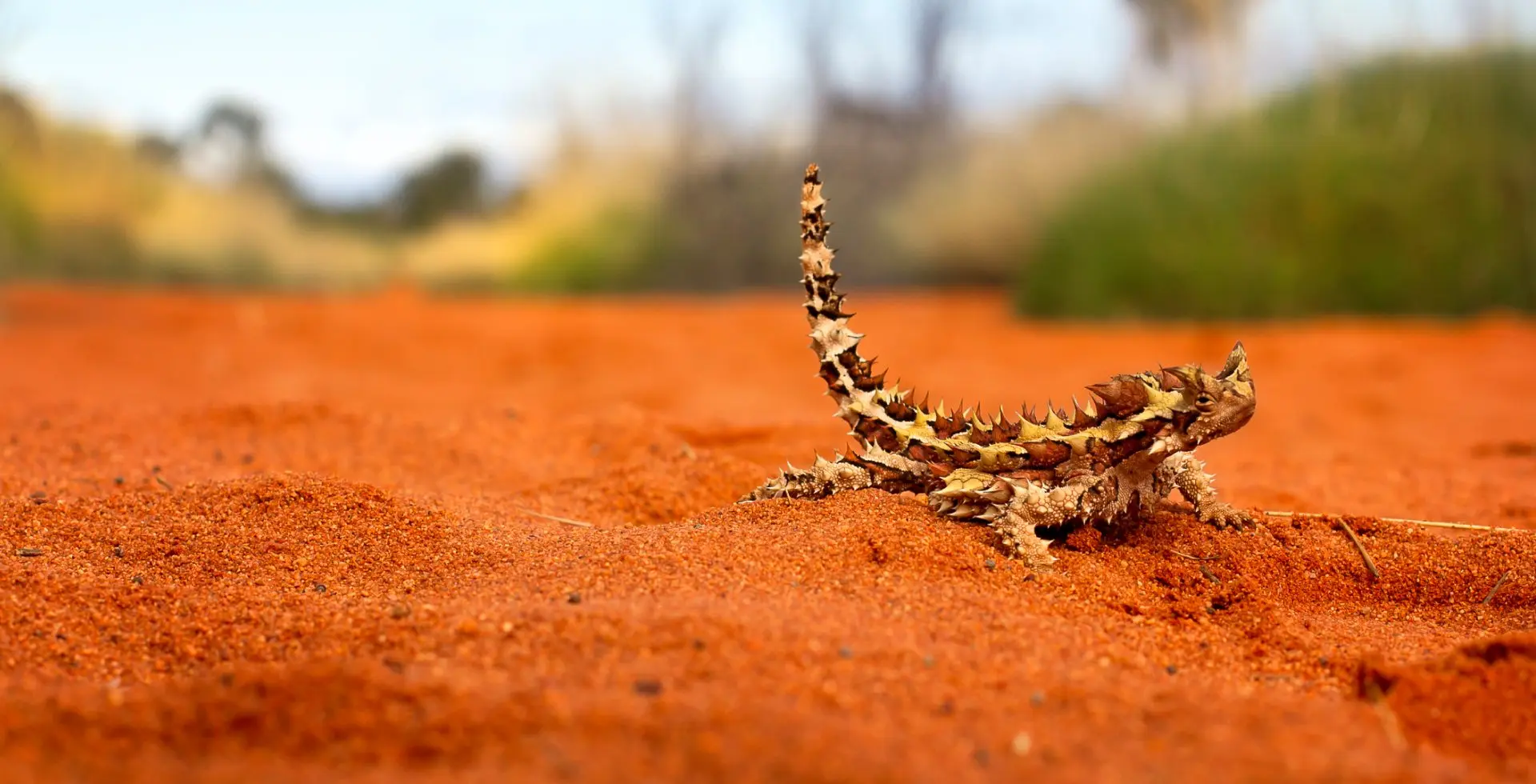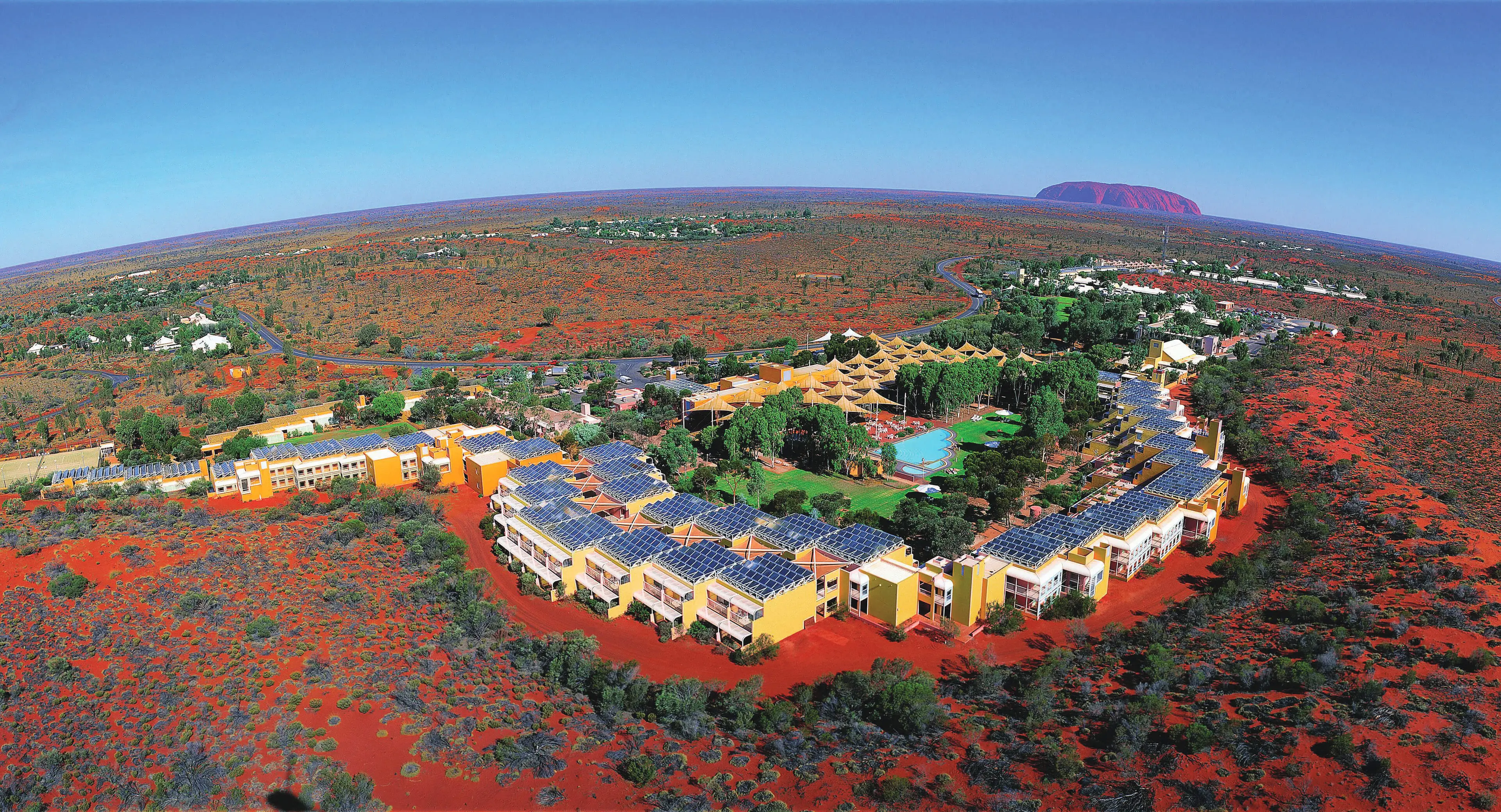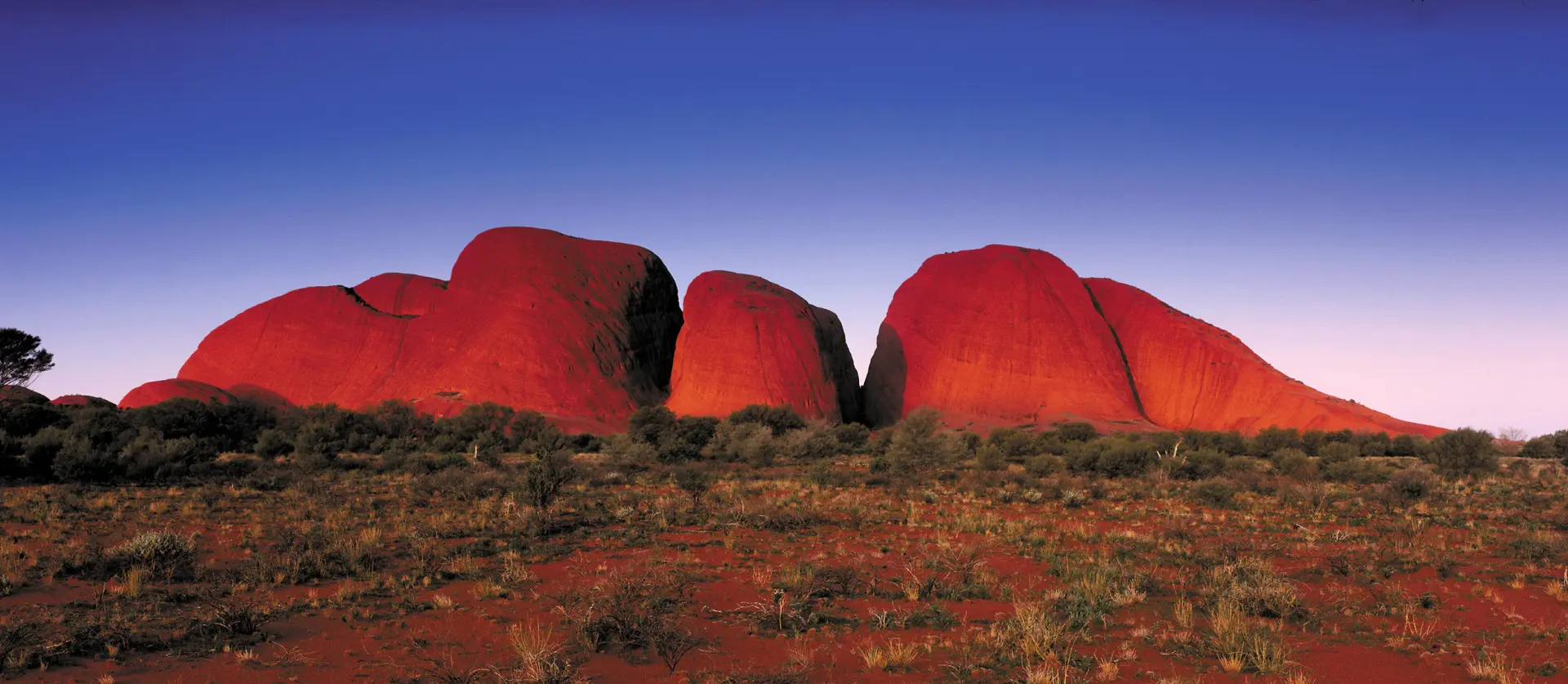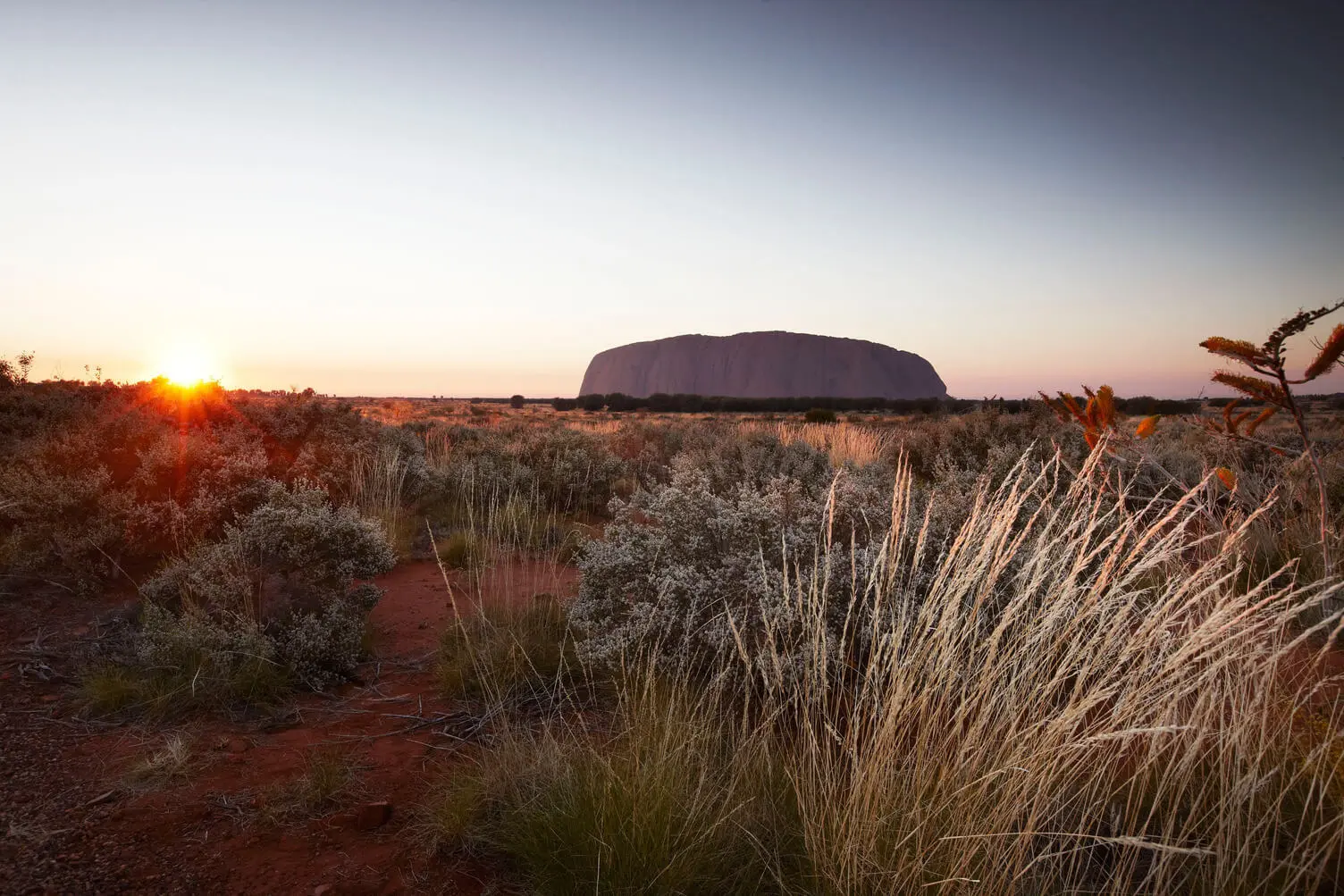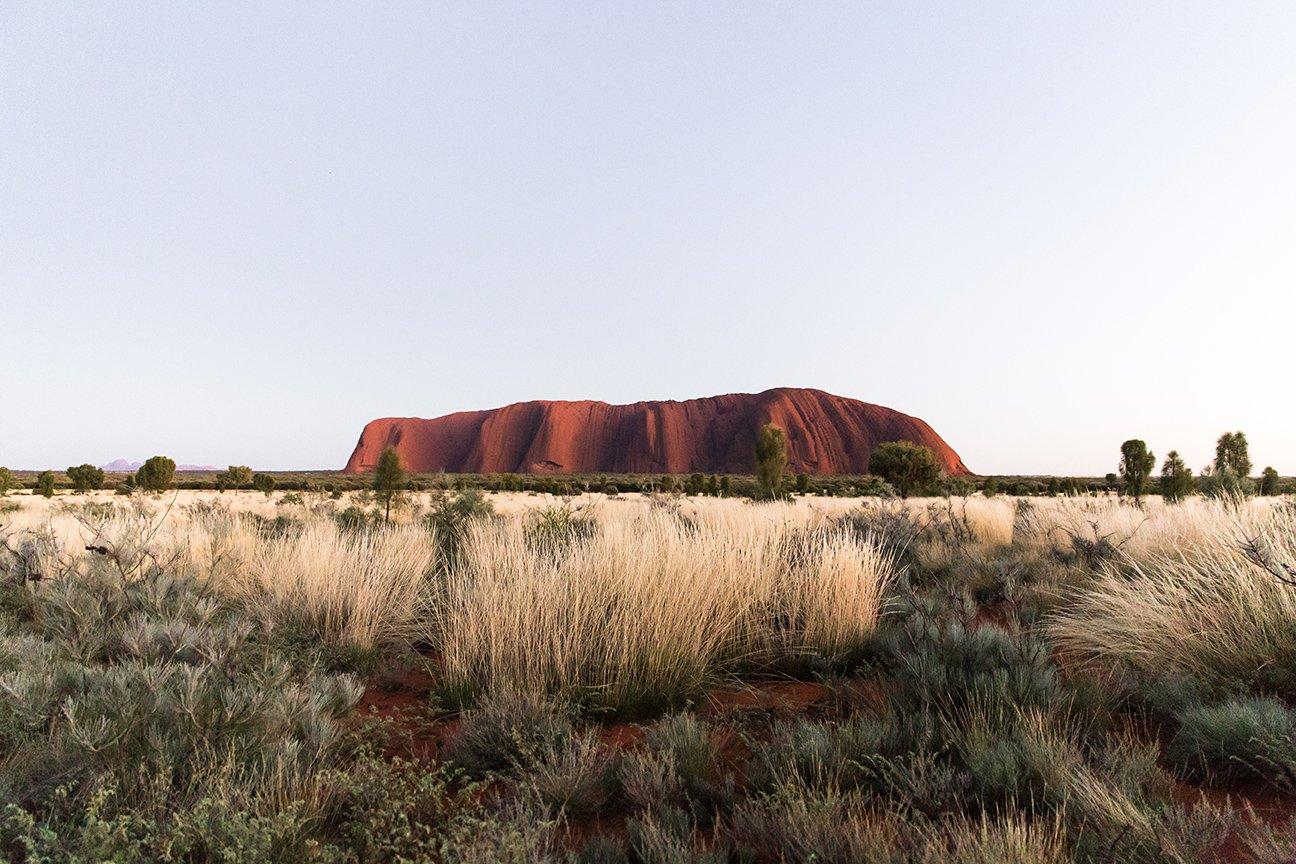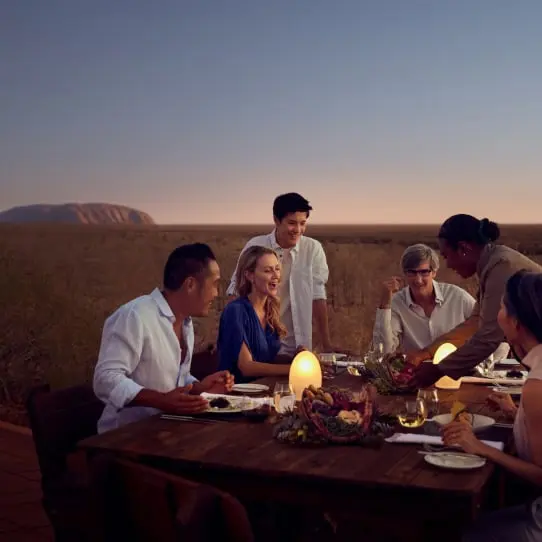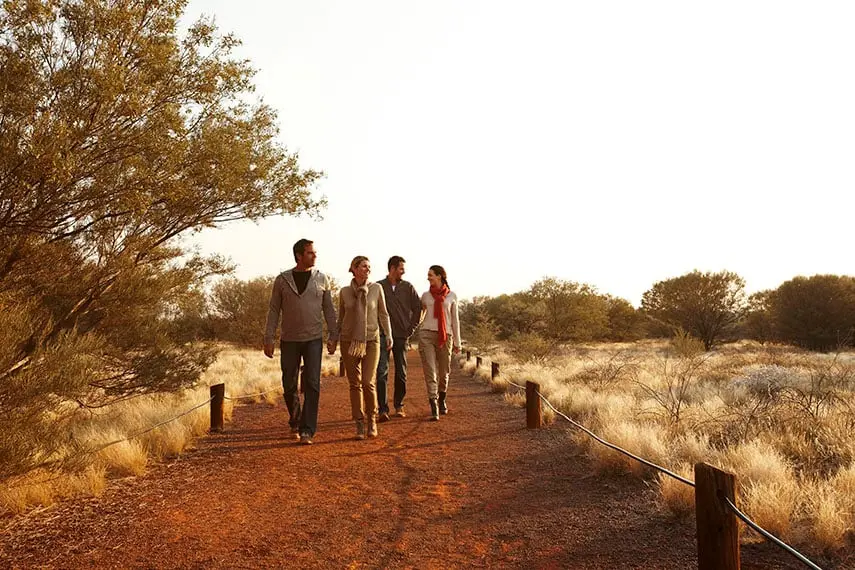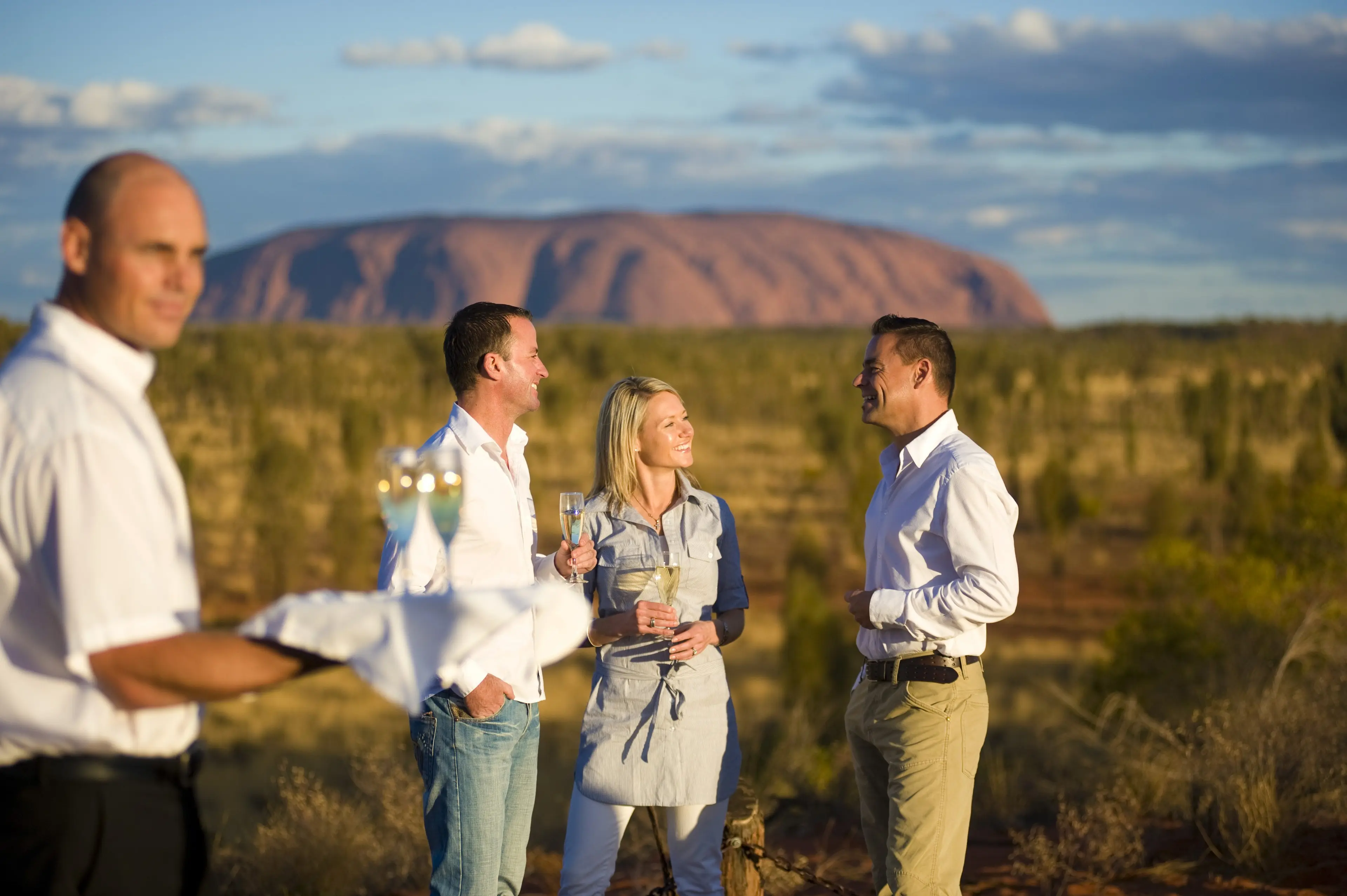Gallery of Central Australia (GoCA): Supporting Local Indigenous Artists
During your stay at Ayers Rock Resort, make time to visit the Gallery of Central Australia (GoCA). This bright, modern space is home to more than 350 works on display by Indigenous artists of the Central and Western Desert region and features paintings, sculptures, crafts, jewellery and more.

During your stay at Ayers Rock Resort, make time to visit the Gallery of Central Australia (GoCA). This bright, modern space is home to more than 350 works on display by Indigenous artists of the Central and Western Desert region and features paintings, sculptures, crafts, jewellery and more.
Learn about the techniques used and the stories each piece tells, chat with Artists in Residence, and if you see something you love, you can feel good about bringing a piece of art home – each purchase gives back to its creator directly and ethically.


About GoCA
After launching in 2021 showcasing the works of nine community art centres, we’re incredibly proud that GoCA now works closely with 22 vibrant and innovative art centres throughout Central Australia, as well as with independent artists and galleries around the region, to promote and showcase the work of renowned and emerging Indigenous artists.
Whether you’re searching for the perfect souvenir from your time in the Red Centre, a gift for someone special back home, or simply looking for inspiration and understanding of Anangu culture, you’ll find it at GoCA!
Why Art Centres?
Predominantly located in remote and semi-remote communities of the Northern Territory, Queensland, South Australia and Western Australia, Art Centres are places of artistic and cultural expression. They also provide economic, employment and training opportunities for Indigenous Australians, as well as playing an important social role in helping to keep culture strong.
Art Centres are community organisations, owned and operated by Indigenous Australians. As non-profit cooperatives, artists and their families directly benefit from art sales. In many remote Indigenous communities, art sales are a main source of income.
By supporting regional Art Centres, GoCA is a platform for the most remote communities to take their works to a wider, international audience.
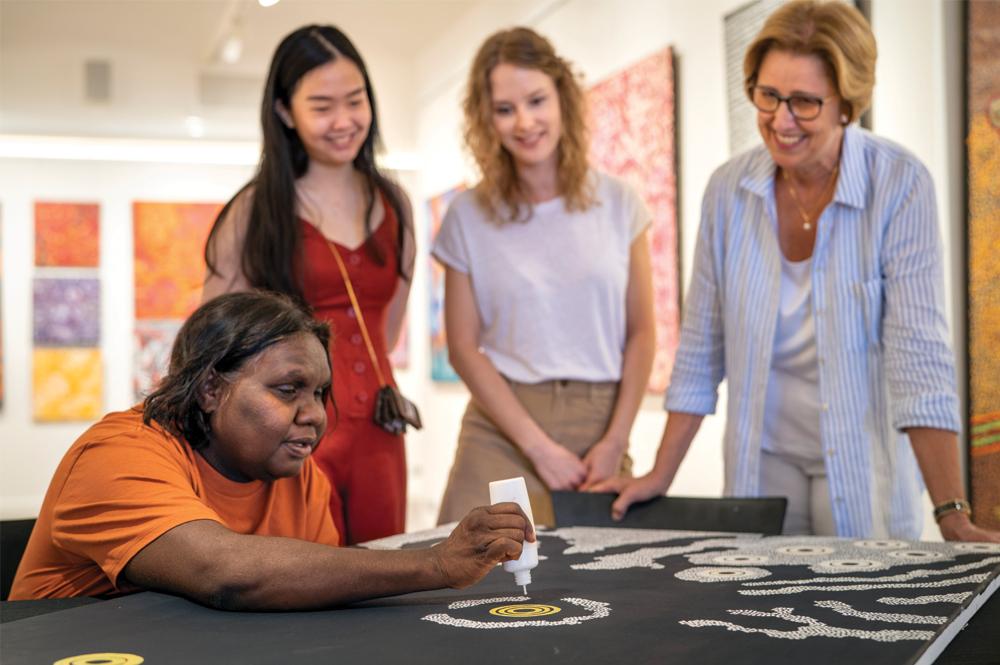
Gallery of Central Australia Artist in Residence Program with Beryl De Rose (Walkatjara Art)

The Birth of Dot Painting As We Know It
For thousands of years, Anangu have used art to communicate, tell stories and teach – just look at the paintings you’ll find around the base walk at Uluru for proof! Traditionally paint was made from natural mineral substances mixed with water or animal fat, typically in hues of red, orange, yellow, white, grey and black.
In 1971, the Western Desert Art movement is considered to have begun in Papunya - in outback terms, considered just down the road at 240 km north-west of Alice Springs.
This is the moment Indigenous iconography that had long appeared in caves, ground painting, body painting and decorations of ceremonial objects was first depicted on canvas using colourful acrylic paints - and the dot painting that is so synonymous with Indigenous art was born.
Western Desert dot paintings surged in popularity and today you’ll find local artwork sold and displayed around the world.
At GoCA, visitors can see a variety of traditional and modern paintings in these styles, from small canvases to large statement pieces. The complimentary daily tour tells the story in more detail, while explaining how the style has evolved over the years.
In addition to paintings, GoCA displays art forms such as fabric and textiles, wood carvings, jewellery, and other handcrafted items.
Commitment to Community
At the Gallery of Central Australia, our commitment is to provide a platform for Indigenous community Art Centres and artists to share their stories and culture through the form of art.
Guests can purchase authentic artworks at the Gallery to directly support the dedicated and talented artists and their families. We ensure artists are remunerated fairly and in line with industry standards to ensure an ethical supply chain, and all showcased artists set their own price for their works. To date, more than 500 consignments have been purchased at the gallery.
Our Resident Artists & Their Works
Our artist-in-residence program allows visitors to watch the artist at work and opens up opportunities for enriching cultural discussions. Learn more about some of GoCA’s in-resident artists who have already completed their residencies, and ask at our front desk about current and upcoming artists-in-residence you can meet during your visit. Observe demonstrations of art and craft while gaining a special insight into the relationship between the artist and their creations.
Visit GoCA
You’ll find GoCA next to Desert Gardens Hotel – look for the giant Palya letters just outside the gallery doors. It’s free to visit and open daily from 9-5, so pop in and take your time admiring the artists’ works.
To learn even more about the works on display, guided tours take place at GoCA daily at 10:30am. No pre-registration is required and everyone is welcome.
If you see something you like, don’t worry about finding luggage space – choose an unstretched canvas and we can carefully roll and package it for you, or even ship your purchase to your home address.
Learn more: Gallery of Central Australia | Ayers Rock Resort
